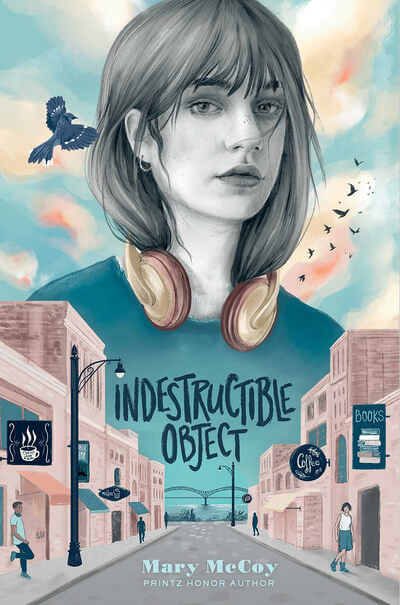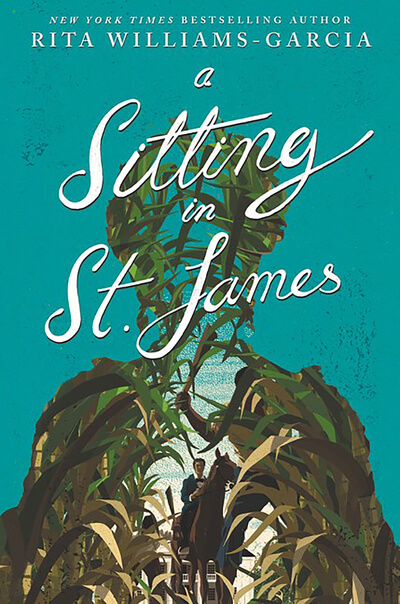Of all the experiences we’ve craved over the last year, high among them is to spend an aimless afternoon browsing in a bookstore or library. When was the last time we thumbed through an overstuffed shelf and found ourselves nose-deep in a book we never would’ve expected? Here are five books we stumbled across and ended up loving.
The Big Rewind
When a novel is described as “Raymond Chandler meets Nick Hornby,” you expect a certain kind of book. So I might’ve picked up Libby Cudmore’s debut looking for a hard-boiled music mystery, but instead I found myself bopping along to a Gen-X cozy mystery, as self-deprecating Brooklynite and wannabe music journalist Jett Bennett scrambles to solve the murder of her beloved neighbor, KitKat, and ends up digging into her own relationship history by way of a box of mix tapes. The Big Rewind has plenty of nostalgic 1980s and ’90s music references (The Smiths! Talking Heads! Cyndi Lauper!), a little bit of romance, great secondary characters, some too-cool New Yorker griping and, best of all, the comforting arc of a cozy, in which there’s a murder but it’s barely the point. Because what is a murder investigation, anyway, but an investigation into yourself? (Or something like that.) This is a punk grandma of a book, and I think we can all agree there’s nothing cooler than punk grandmas.
—Cat, Deputy Editor
Mrs. Bridge
Evan S. Connell’s Mrs. Bridge was originally published in 1959, and since then it’s gained a reputation as an underrated masterpiece. In 2012, the Guardian called it an “overlooked classic.” In 2020, Lit Hub called it a “perfect novel.” Meg Wolitzer and James Patterson have praised it in the New York Times and on NPR—but I didn’t know any of that when I checked it out from the library. As I dug into this strange, engrossing novel about an utterly conventional Kansas City housewife, I didn’t know what to expect. India Bridge’s life moves steadily by, with rare flashes of the extraordinary. Other characters experiment and act out, but Mrs. Bridge only occasionally flirts with action before deciding to stay the course of her conformist, upper-middle class, conservative way of life. If that sounds boring, it isn’t—but it’s difficult to explain why not. Connell’s keen insight into the mind of this midcentury woman is compelling, moving and ultimately masterful.
—Christy, Associate Editor
The Diana Chronicles
For the absolute life of me, I could not tell you why or how my middle school-aged self picked up a copy of Tina Brown’s seminal, definition-of-dishy biography of the late Princess Diana. Perhaps I wanted a more modern princess after finishing my umpteenth reread of every Royal Diaries book my library had on the shelves. What I do remember is that I inhaled this book with the rapture of a sheltered young history buff who had never encountered media more dramatic than a Disney Channel Original Movie. Brown, who covered and commented upon Diana’s life while serving as editor-in-chief of Tatler and then Vanity Fair, tells Diana’s story with witty relish and juicy details galore. But under all the tabloid fizz, Brown also paints a refreshingly complicated portrait of her iconic subject. Her Diana is not a sainted martyr or a hysteric with a victim complex, but a woman trying to vanquish her inner demons, who is on the verge of finding equilibrium when her life is cut unfairly short.
—Savanna, Associate Editor
Sloppy Firsts
Fall 2001, suburban New Jersey. I was 15, a sophomore in high school. My best friend had moved across the country over the summer, and the twin towers had come down on the fifth day of school. It’s almost always a weird time to be a teenager, but that year felt like an especially weird time. And then, on a shelf in the little bookstore next to the ShopRite, a lime green spine caught my eye. Jessica Darling, Megan McCafferty’s heroine, was also a sophomore in suburban New Jersey whose best friend had just moved away. (“I guess your move wasn’t a sign of the Y2K teen angst apocalypse after all,” Jessica writes to her in the letter that opens the book.) It felt like a sign. McCafferty’s funny, heartbreaking, often profane and deeply honest novel, in which Jessica grieves her friendship, grapples with mental illness and even falls in love, was exactly the book I needed at that moment to make 15 feel a little less weird.
—Stephanie, Associate Editor
Peter the Great
I could have chosen any biography of a European leader to read for my college history class. Why I decided to go for a 1,000-page book about a Russian czar that was written before I could walk has been lost to time, but the ripple effect has been huge. Robert K. Massie won the Pulitzer for this biography, and his deep understanding of his curious, mercurial subject and 17th-century Russia made me feel like I knew Peter personally. That’s probably why I peppered my conversations with anecdotes about him for weeks. (Your dorm room is too small? Peter’s cabin was only about 700 square feet, and his bedroom was barely large enough for him to lie down! Hate your boyfriend’s beard? Take a cue from Peter and tell him if he enters your presence wearing one, you’ll rip it out!) In the years since, I’ve read the book twice more, as well as everything else Massie has ever published, and have found each of his books as immersive.
—Trisha, Publisher


























